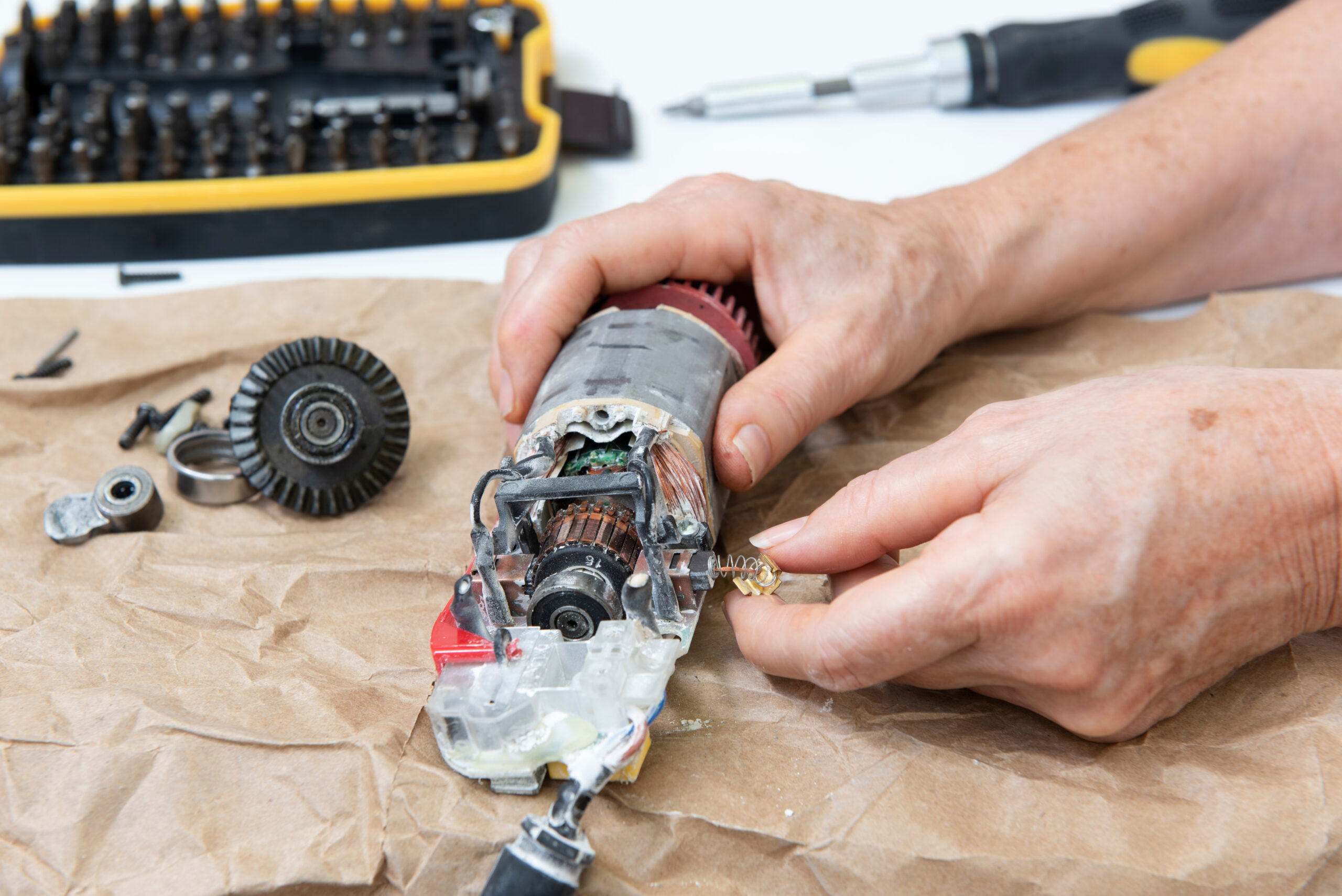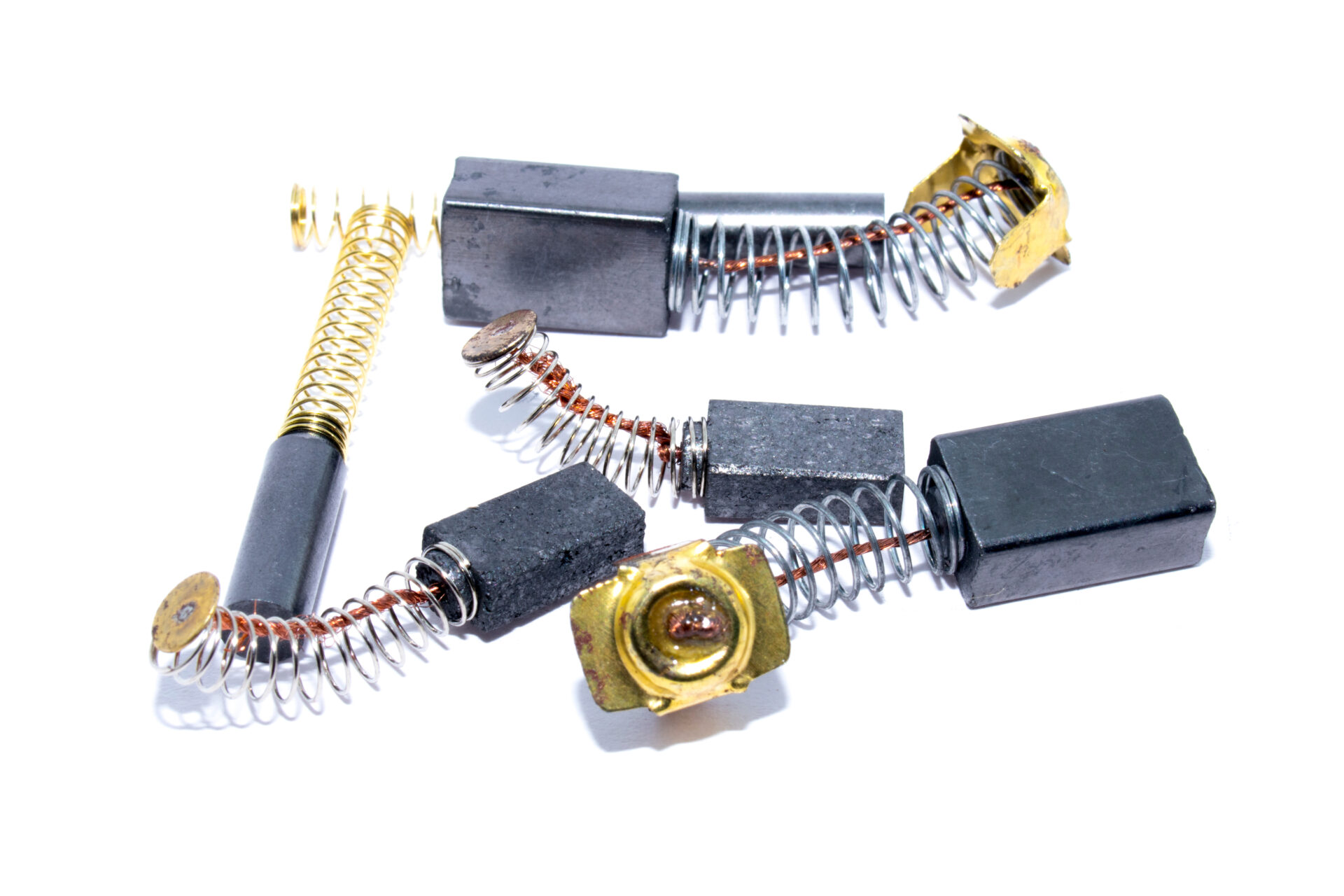Everybody knows that an electric motor revolutionized how things are powered and operated. But do you know what’s happening inside an electric motor to make it work? How is electricity transmitted and how can power tools run without worry? The answer lies in a simple yet essential component of most motors—the carbon brush.
Table of Contents
What Are Carbon Brushes?
Carbon brushes are made from graphite. It’s an electrical conductor that can withstand extreme temperatures and pressures. They’re rectangle-shaped pieces of graphite with a handle or eyelet attached. These brushes provide friction control between the commutator surface and the rotor, allowing electricity to flow from the source to the rotor in a motor.
Not all carbon brushes are the same, even though they look identical. Different motor designs use different materials and sizes of brushes, with some requiring special shapes for optimal performance. So, it’s essential to buy carbon brushes that are compatible with the motor you want to use them in.
The Role Of Carbon Brushes
To better understand how a carbon brush works in an electric motor, identifying the purpose of an electric motor and its parts is necessary. Unlike generators which convert mechanical energy into electrical energy, electric motors convert electrical energy into mechanical energy. So, its goal isn’t to cut electromagnetic fields but to keep the rotor spinning.
An electric motor has two main parts—the stator and the rotor.
- Stator: The stator is the stationary part of the motor. It’s made of permanent magnets, which cause the rotor to spin and generate torque.
- Rotor: The rotating part of the motor acts as the electromagnet that interacts with the stator’s permanent magnet. It’s made of copper or aluminum and contains the motor’s windings connected to the electricity source.
The principle of magnetism states that opposing poles attract and like poles repel each other. So, you have the permanent magnets (stator) divided into two poles (North and South) and the rotating electromagnet (rotor). Electromagnets need an electric current to develop a magnetic field.
When your power tool is on, the electric current passes through the rotor’s windings and creates a magnetic field, causing the coils to act like a magnet also divided into two poles.
So, when the rotor’s magnet interacts with the stator’s magnets, it starts to spin. When you turn off the power, the magnetic field is gone and the rotor stops.
Now, if the rotor connected to the source will keep spinning, how will you connect it to the source without its wires getting tangled up? No matter how organized external wires are, they’ll eventually get tangled up if connected directly to the rotor. This is where the carbon brush comes into play.
How Do Carbon Brushes Work?
The carbon brushes are in a stationary position. Each motor has a pair of carbon brushes, one positive and one negative. One side of each pair is in contact with the commutator while the other is connected to the source. The commutator is a ring-like material (mostly made of copper) that changes the current’s direction and helps the coils shift their polarity.
When you plug in and turn on your power tool, an electric current will flow from the source to the carbon brushes and then to the commutator. From the commutator, the current goes through the rotor windings and creates a magnetic field, making its coils act like a magnet.
The rotor is now an electromagnet and starts spinning because of the attraction between its magnets and the stator’s permanent magnet.
As the rotor spins, the commutator constantly changes the electric current’s direction to keep the rotor spinning and avoid any interruption in the electric current. The carbon brush supplies a continuous flow of electricity, allowing the electric motor to keep running.
Because of the friction created by its contact with the commutator, carbon brushes will wear out slowly. That’s why it has a spring that pushes the carbon brush into the commutator to ensure good contact and maintain a constant current flow. But when the graphite wears out, it’ll be necessary to replace the carbon brushes.
Replacing Carbon Brushes
Replacing carbon brushes is a simple task. First, you must unplug the power tool from the source of electricity and open its housing. Next, locate the brushes, loosen the spring that holds the brush in place, and remove them carefully so as not to damage any other parts. After that, insert a new pair of carbon brushes and reassemble your power tool.
Conclusion
Carbon brushes are a small but essential part of electric motors. They connect the rotor and the source to ensure it keeps spinning, converting electrical energy into mechanical energy.
To keep your power tools running smoothly, you have to replace the carbon brushes when they wear out so as not to damage other parts. Replacing them is a simple process that requires no special tools or expertise. Thus, you can keep your motor running efficiently with just a bit of maintenance and care.






